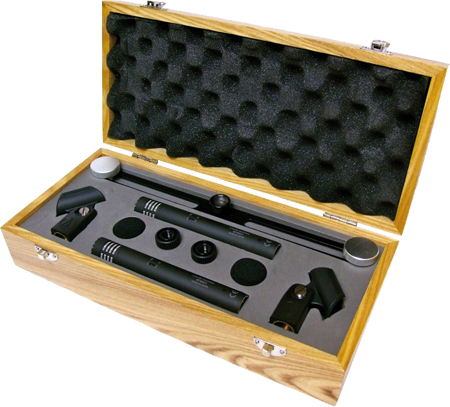AT2031P And AT4021P Review
Audio-Technica has unveiled two new matched-pair mic designs to suit budgets high and low. Huw Price squares up.


Both microphones have permanently polarised fixed cardioid capsules, which means that they are electret microphones. Although the principle has been around since the 1920s, a distinction is often made between electret condensers and ‘true condensers’ – along with an implicit judgment regarding sound quality.
Assumptions of this sort are out of date and many of the world’s most prestigious microphone manufacturers use electret designs. The list includes Earthworks, AKG, Sony and DPA.
AT2031P
The AT2031 is described as ‘the ideal microphone for stringed instruments in critical studio and live applications’. The specs promise extended frequency response with a slight rise in the high frequencies, low self-noise, high SPL handling and wide dynamic range. The body is finished in non-reflective satin black with subtle silver lettering. The XLR connections are gold-plated, and the recessed switch activates a 6dB per octave bass roll-off at 150Hz.
AT4021P
The AT4021 is designed ‘for use in professional applications where remote power is available’, so it needs a mixer or preamp that can supply 48V DC phantom power. This time the finish is matte black with even subtler lettering, and the bass roll-off switch activates a 12dB/octave filter at 80Hz. The 4021 also has an extra switch that activates a -10dB attenuation pad to reduce sensitivity to popping, low-frequency ambient noise, room reverberation and mechanically coupled vibrations.
Look closely at the specs, too, because despite identical sensitivity ratings, the 4021 has superior signal-to-noise ratio, a wider dynamic range and better SPL handling. Output impedance also differs, with the 4021 rated at a preamp-friendly 250 ohms compared to the 2031’s 85 ohms.
Sounds Right
Testing commenced with aligning the capsules of each pair as closely as possible then flipping the polarity of one side. We were able to achieve near-total cancellation with volume levels equalised, which suggested that each set could justifiably be described as a stereo pair. The stereo bar included in both kits is a great piece of gear and there’s nothing to prevent you from using it with other brands of microphone. The holders slide to allow spacing from 6.5cm to 27.75cm. This makes it easy to set up coincident and binaural pairs, as well as more obscure placements like the ORTF arrangement. The best thing is that you can adjust your mics at a convenient height then hoist them up on a single stand.
The 2031 comes across as a crisp, clear and detailed microphone. Arranged as a coincident pair, the centre image was solid and impressively lifelike but we felt we could detect a couple of resonance points at around 2.3kHz and just above 5kHz that gave this pair a vaguely shrill quality.
Generally, there’s a pleasant high-frequency sheen and plenty of detail, but the bass was slightly lacking in weight and substance. Applying a couple of notch filters at the resonant frequencies made the 2031s sound far more natural and realistic and we preferred the sound with the capsules spaced apart, where the underlying hint of comb filtering was less apparent.
The 4021s turned out to have a smoother, more full-bodied and natural tonal quality. The bass was more solid, and while there was just as much detail, there were no obvious resonance frequencies and the metallic treble of the 2031s was absent.
Given the higher price, it’s hardly surprising that the 4021 pair has a sweeter, more musical character. The 2031 pair offers high-quality sound at its price, but you might need to do a little extra work to optimise the tone of your recordings. By contrast, the 4021 pair gets on with the job in a quiet and fuss-free way.
Verdict
+ Clear detailed sound quality
+ Impressive signal-to-noise ratio
+ Versatile and practical
+ Lifetime warranty (4021P)
– Slight ringiness (2031P)
– Cardioid-only
– No attenuation pad (2031P)
Well-made and fine-sounding stereo pairs with great accessories.
2031P
7/10
4021P
8/10


